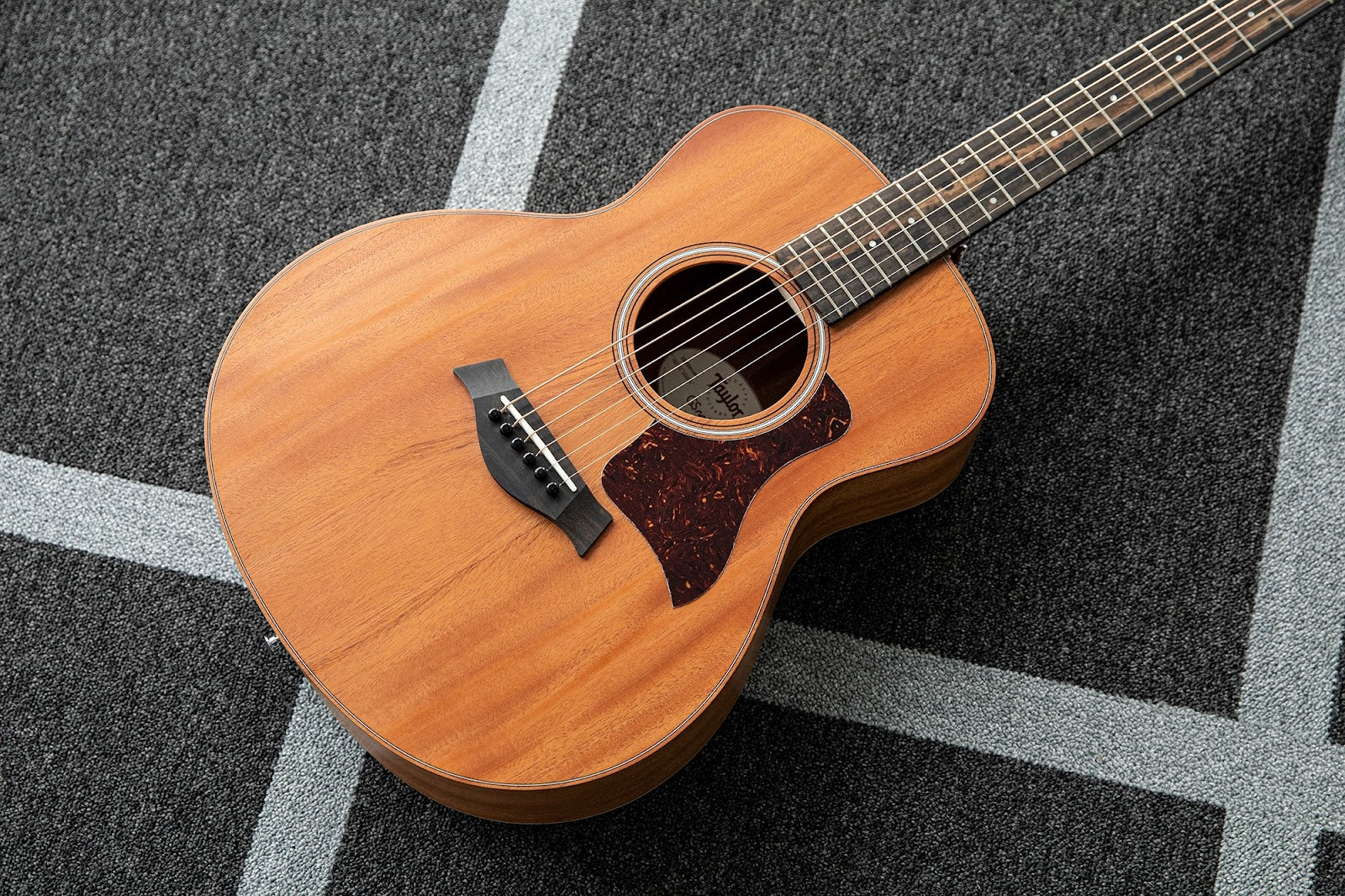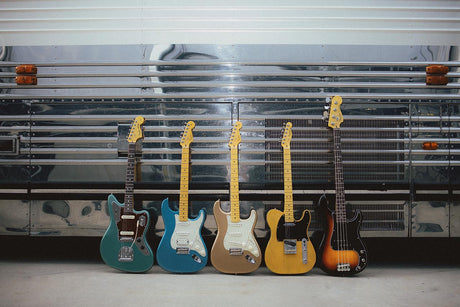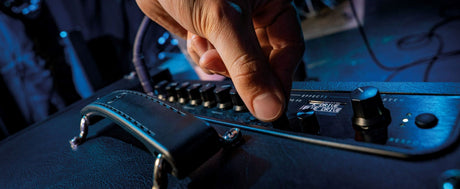Despite only being roughly 40 miles away from one another and all Taylor guitars being made with exceptional quality, some key differences exist in the guitars made at each factory.
Follow our guide as we explore the differences in construction, bracing and body shapes between Mexican-made and US-made Taylor guitars.
Which Taylor guitars are made in Mexico?
Any Taylor guitar that’s a 200 series or lower – this includes the 100 series, GS Minis, Baby Taylor Guitars and Academies – is made in the Mexican factory.
The 300 range and upwards of Taylor guitars are all made in America.
What are the key differences between Mexican-made Taylor guitars and American-made Taylor guitars?
Aside from where the guitars are made, it’s important to know the key differences between Mexican Taylor guitars and American versions. The main differences are the guitars’ wood construction, bracing and body shapes.
It’s worth noting that, although there are differences, the Mexican and US-made Taylors both share the same incredible quality control.
All guitars also share the same manufacturing processes, including the wood drying process and the construction of the necks and bodies. So, whichever you choose, you’re getting an incredibly well-made instrument.
Wood construction on Mexican Taylor guitars vs US-Built Taylors
The US models are more advanced in terms of their craftsmanship, such as detailed binding, inlays and finishes. Plus, each one comes with a hard case, whereas all Mexican models aside from the 200 Deluxes come with a soft case.
Every Taylor guitar built in the El Cajon, USA factory features all-solid wood, whereas the Mexican Taylor guitars have a solid top combined with layered back and sides.
The back and sides contribute a lot to the guitar’s overall sound – combined with the top and body shape – and different woods can dramatically alter the instrument’s sound.
For example, rosewood tends to wield a strong low end and a clear, crisp top end, whereas mahogany has a lovely warm mid-range. The solid back and sides will mean the harmonics ring out differently, resonate and respond better than the layered version.
Unlike laminated or “layered” wood, as Taylor calls it, solid wood also ages over time, and the tone improves the more you play it.
There are more wood combinations to choose from in the American lineup of Taylors, meaning you can nail the sound you’re after or pick a wood with a dazzling finish – Koa being a huge hit for Taylor on this front.
Their flagship 800 Series pairs a Sitka spruce top with rosewood back and sides. It’s a classic combination and provides exactly the sort of sound that many acoustic players are after. However, the 324ce, for example, has a mahogany top and Sapele back and sides. This means it will sound more mellow, more mid-focused and will lend itself to a different style of player.
These wood pairings only scratch the surface of what’s available in the comprehensive American lineup of Taylor guitars.
V-class bracing on Mexican Taylor guitars vs US-Built Taylors
More recently, we’ve started seeing Andy Powers’ ground-breaking, patented V-Class bracing on many American-made guitars, whereas all Mexican guitars feature X-bracing.
Unique to Taylor guitars, V-Class bracing both improves and sustains volume and improves the perceived intonation all the way up the neck, which is where traditional X-braced guitars tend to go a little wayward in terms of tuning.
This bracing is incredibly useful if you’re playing or recording with keyboards or virtual instruments that are perfectly in tune.
Mexican Taylor guitars’ body shapes vs US-Built Taylors
Some Taylor body shapes are exclusive to the American factory. The redesigned, big-bodied Grand Symphony offers a unique sound with a wide dynamic range that lends itself to strumming and fingerpicking particularly well.
There’s also the Grand Pacific, which has proven its success in recent years as Taylor’s reimagination of the timeless dreadnought body shape. The Grand Pacific is available only in the 300, 500 and 700 Series, all made in America.
Should I buy a Mexican Taylor guitar or an American one?
More than just the 40 miles differentiate Mexican and US-built Taylor guitars.
The solid wood construction of the American-made models improves the instrument’s sound. So while Mexican Taylor guitars are still impressive, they won’t have the depth of tone or age as well in the long run.
With more choice regarding wood combinations and body shapes with the US models, as well as the inclusion of Taylor’s patented V-Class bracing throughout the range, a lot more time goes into the US-built Taylors, particularly on the inlays, binding and finishes.
Mexican-made Taylors should certainly be held in the same high regard as the US-built guitars, as they still offer incredible quality and craftsmanship. However, if you do want more from your acoustic, then the US-made 300 series and upwards offers just that.









